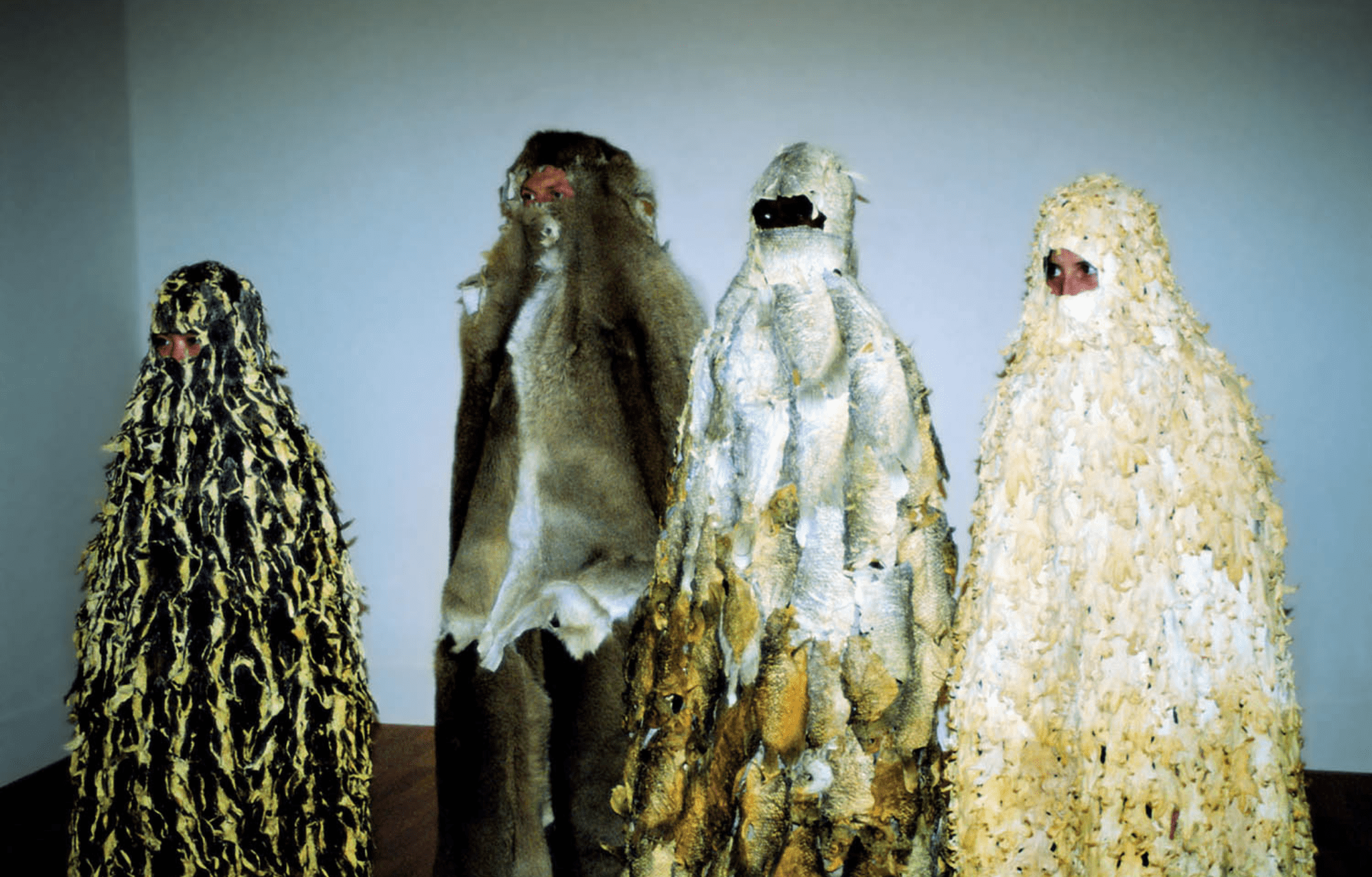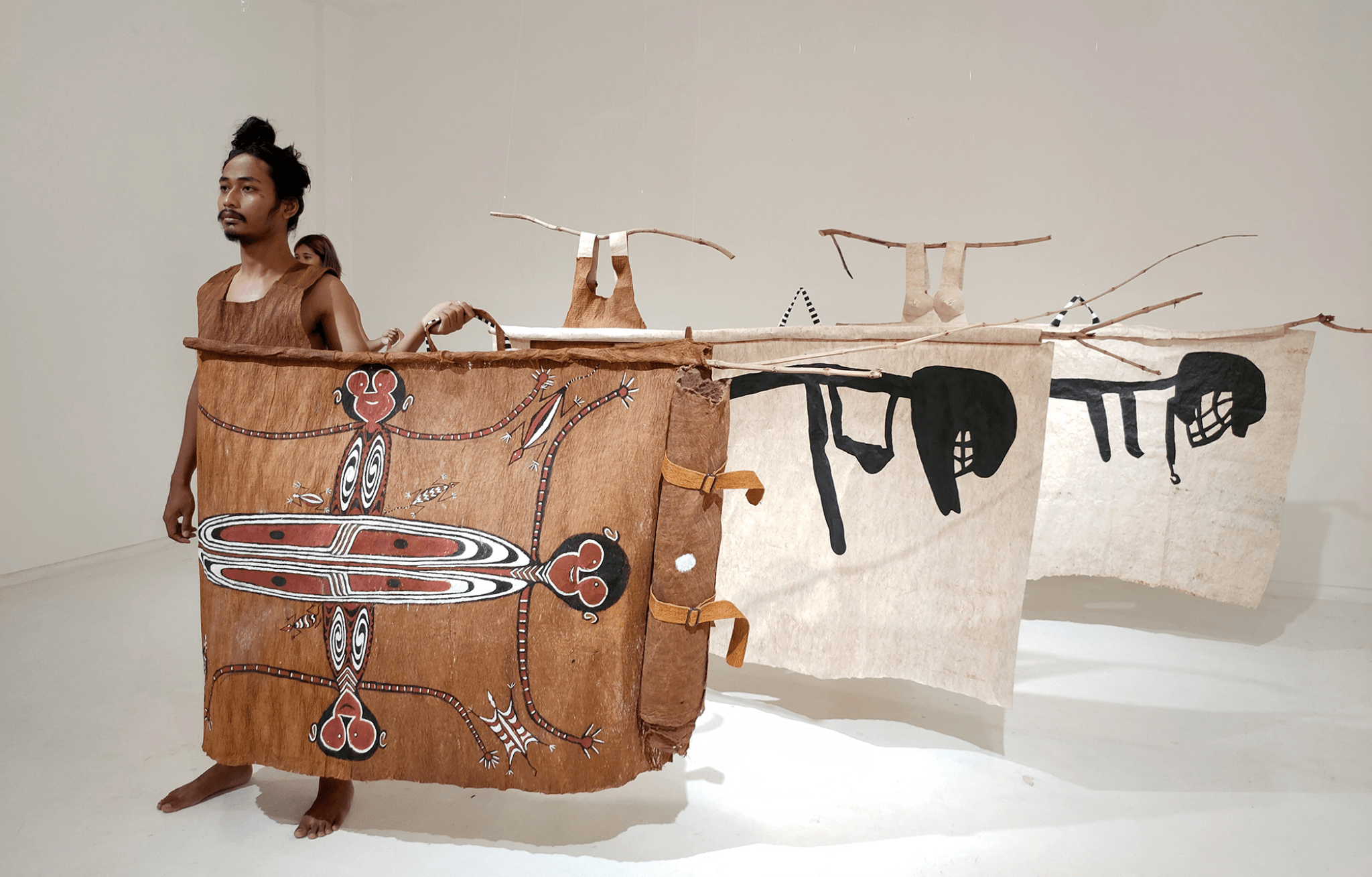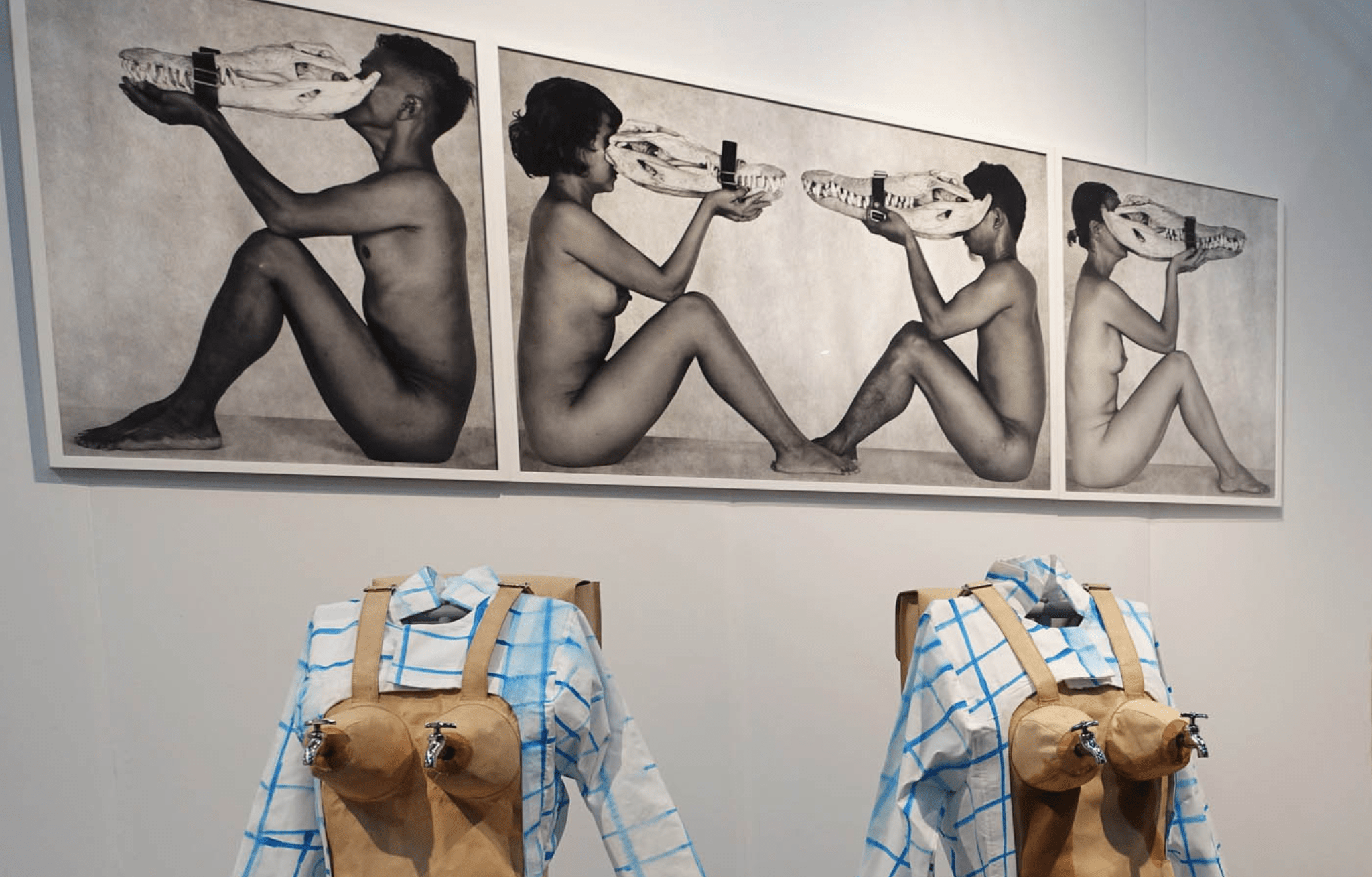
We are like impermanent buildings with a façade with a changeable inside. The second skin that we wear is like a house in which we can appear and hide; we have to be ready to leave or inhabit it. Everyone who confronts my work relates to it from their particular background, culture and personality, and therefore experiences it in different ways. I want my work to relate to these specific audiences, to address some of their taboos and interpretations.
Mella Jaarsma
The use of costumes clearly defines you as an artist and they are your “skin” to explore the fascinating history and culture of the people and country where you have been living for so long. How has it been for you, as a foreign artist, to crawl “under the skin” of your adoptive people and understand their point of view, their rituals and try to catch their true voice?
I have been using clothing or costumes as a way to open up a dialogue with the public and the viewers that are confronted with my work. I looked for a direct physical connection and the viewer can participate or imagine him/herself wearing the costume. I try to address different issues that play an important role in Indonesian culture, its history and recent social, political and ecological developments. Because I did not grow up in Indonesia, I feel like an insider– outsider, which also enables me to address certain taboos and views on the colonial past as a Dutch.
When we invited you to participate in the project, the pandemic was still a complicated matter to deal with, restrictions were still in force, but you were intensively working in your studio. What challenges has this period brought in your life and work?
Much more contemplation and time to read and think. Before, I travelled a lot with my work and doing performances – the physical appearance being very important at all times. During the pandemic, confronted with our own fragile existence, we were forced to think about our core values, which create our notion of life in relation to death, time (present, past, future) and nature. I translated these ideas into horizontal dresses, which are sort of impossible to put on, because they are horizontal and not fitting yet. With the horizontal dresses we look at what is ahead of us.
You recently concluded a collaboration with Agus Ongge, an artist from Papua who is involved in a movement supporting the preservation and reacquisition of knowledge and culture of indigenous peoples. Together, you created a project that started from Operation Koteka, a measure taken in the 70s by the Indonesian government that forbid the use of a special piece of clothing worn by Papuan males…
It not only started from the “penis sheaths” operation that was implemented by the New Order regime in the 70s to change clothing habits in Papua. I researched intensively about clothing and its relation to power structures. The missionaries that came at the beginning of the 20th century to Papua, already forced people to cover up more and get rid of their penis sheaths, loincloths, grass skirts etc. Agus Ongge is from the Sentani district, and he makes paintings of traditional patterns with natural colour pigments on bark cloth. In that area, bark cloth was used for clothing, especially loincloths and sarongs. But the missionary, and later the Indonesian dictatorial regime, banned them. In the 90s artists started to honour their tradition, creating and painting on bark cloth again. In our collaboration project, we sort of reversed the process of bark paintings and turned them into a series of wearables.
Food is another topic to which you return many times in your work, in an attempt to reflect on our society’s greedy behaviour, in contrast with the wise habits of the past of local populations. The small work you created for Art Theorema #3, in fact, recalls your larger project, Feeding the Nation… What is the story behind this series?
The reality of our concern for the environment shows us how fragile we are and how we depend on others’ mentality and policies. “First nation” people take care of 90 percent of the forests in the world. We have to protect them, because if we protect them, we protect our air, food, land and water. This project aims to rethink basic human needs. How do our bodies respond to the contemporary world, afflicted by greedy behavior? Inspired by squatting figures in ancestral sculptures, the work operates like an archetype, questioning who eats who/what and who feeds who/what. It is inspired by the idea of offering or worshipping. The act of offering is an important part of Indonesia’s hybrid culture. The idea of giving something (back), as a way to rectify imbalances, can be found not only in traditional ceremonies, but also in contemporary, daily interactions between people. Although often regarded as an act of gratitude, offerings require a cost or a sacrifice: it is a search for balance between the one who gives and the one who receives.
PHOTO CREDITS
Hi Inlander, Hallo Native, 1998 – 1999 Frog’s legs, chicken feet, kangaroo leather, fish skin, photographs, 3 kitchen tables, spices.
Photo credits: Queensland Art Gallery & Gallery of Modern Art, Brisbane, Australia, and the Artist.
Mella Jaarsma in collaboration with Agus Ongge At First There’s Black/Pertama Ada Hitam, 2021 Costume installation – natural colors on bark cloth, mixed media, video Variable sizes.
Photo credits: Courtesy of Mella Jaarsma and Agus Ongge
Feeding The Nation I, 2020 Photograph printed on Hahnemuhle paper 3 parts: 85 x 77 cm, 85 x 135 cm, 85 x 75 cm Edition of 5, 2 artist’s proofs.
Photo: Courtesy of the artist































